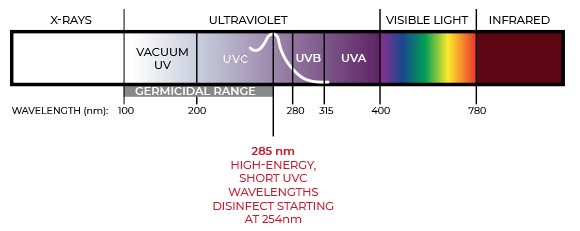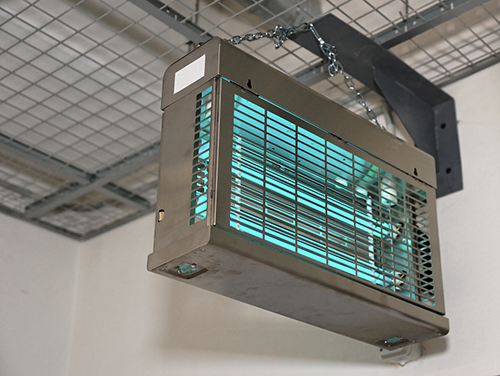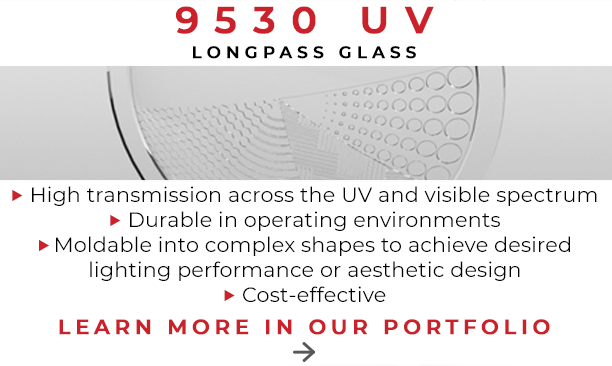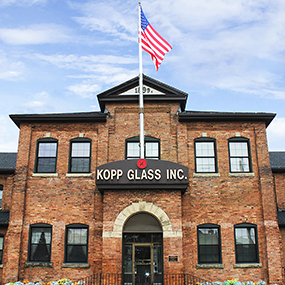The Ebola virus continues to spread through West Africa, with new outbreaks surging in Monrovia, Liberia. Healthcare workers are struggling to contain the spread of the virus and unfortunately they risk contracting the virus in their efforts to care for those infected. Increasingly, there are reports of healthcare workers returning home – infected with Ebola. In response, several U.S. states have developed quarantine protocols in an effort to protect the public.
While experimental vaccines are being developed, worldwide health organizations are searching for ways to protect healthcare workers on the frontline. One method that has proven successful is based on the power of light to disinfect contaminated environments. Ultraviolet germicidal irradiant devices (UVGI) use UVC light to alter the DNA structure of viruses and prevent them from replicating.
UVGIs have been used for decades as a purification method in water treatment facilities and HVAC systems. It is a very effective technology that is capable of destroying bacteria, viruses, and mold whether they are in the air, water, or on any surface. In the face of pandemics, there is an urgent need to develop technologies and procedures that protect healthcare workers and eliminate pathogens in hospitals and treatment facilities.
Light-based Technology Reduces Fear of Contamination at Hospitals & Treatment Facilities
Those who seek treatment at medical facilities risk spreading the disease to hospital workers and other patients. The World Health Organization (WHO) reported that, "exposure of health-care workers continues to be an alarming feature of this outbreak." Many healthcare workers in West African medical facilities abandoned their post for fear of contracting Ebola.
Hospital-acquired infections (HAI) occur not only in Africa, but also in the United States. According to the CDC, 1 in 25 hospital patients will acquire an infection during their hospital stay. In 2011, the number of HAIs in the U.S. reached 722,000, with about 75,000 resulting in death – far surpassing automobile related deaths. Motivated by this disturbing reality, Dr. Jeffrey Deal, a Fellow in the Royal Society of Tropical Medicine and Hygiene, invented the TRU-D SmartUVC. The TRU-D is an automated room decontamination device that can be used to eliminate pathogens in healthcare settings, protecting patients and healthcare workers. In an effort to stop the spread of Ebola in hospitals, Dr. Deal, working with the WHO, CDC, UNICEF, and MSF, installed two TRU-D robots in the Ebola treatment units at ELWA and JFK hospitals. After using the robots, he stated that,
"The TRU-D's are functioning perfectly and are the "work horses" that Chuck Dunn said they would be. We are treating EVERYTHING at EVERY opportunity -- bathrooms, patient rooms, treatment rooms, etc. The most important thing being done is when a suspected patient is confirmed by labs, they are moved to the confirmed ward. Before the next suspected case moves in, we treat the space. Some of these patients actually had malaria or typhoid fever and not Ebola. We are using TRU-D to assure that at least the space could not transmit the disease."
Ebola has been found to be very sensitive to ultraviolet light and short exposures have proven successful at inactivating the virus. Most UVGI devices are built around mercury vapor lamps; where the excitation of the mercury vapor generates a continuous output of UVC light. The exception is Xenex, they use xenon gas to power their UVGI devices; emitting much higher intensity UVC light in pulsed doses.
The Germicidal Range of the Ultraviolet Spectrum
The ultraviolet spectrum is just outside the visible light spectrum and is comprised of four distinct ranges.

UVA wavelength range: 315 – 400
Closest to the visible spectrum, UVA’s long wavelengths are often used in applications that require fluorescing, like black lights, “bug zappers,” medical imaging, etc.
UVB wavelength range: 280 -315
UVB light can damage human cells, resulting in sunburn. However, at this wavelength, vitamin D production is stimulated and produced in the skin.
UVC wavelength range: 200- 280
DNA can absorb light within the UVC range and become mutated and possibly cancerous. The ability to damage DNA is what makes UVC so effective at deactivating pathogens.
Vacuum UV (VUV) wavelength range: 100-200
The wavelengths within the VUV range are capable of attacking microorganisms, chemicals, and odors but actually produce harmful ozone in the process and are not typically used for disinfecting open public spaces.
The Earth’s atmosphere blocks out UVC and shorter wavelengths and we typically are only exposed to UV light in the A and B ranges. UVC devices emit controlled doses of light that are very effective at disinfecting.
UVC light is able to penetrate cell walls and is absorbed by the nucleic acid or DNA of a microorganism. Depending on the exposure, this can cause bonds within the DNA to break and to then reform new detrimental bonds between adjacent bases within the structure. These new bonds do not act in the same manner as the old bonds and prevent the necessary “unzipping” of the structure during the replication process. The result? Sterility and ultimately death.
Critical Component of an Emergency Response Plan
Globalization has made pandemics a reality and as the Ebola outbreak unfolds, we’re learning that preparedness is crucial. A preventative action plan is critical to halting the spread of highly-contagious viruses; the CDC’s Interim Guidance for Environmental Infection Control in Hospitals for Ebola Virus reviews Ebola’s ability to persist in indoor environments and suggest that it is easy to inactivate by ultraviolet light. All areas that patients are transported to or treated in must be thoroughly disinfected in order to protect healthcare workers and other patients.
Many tests have been conducted on the effectiveness of UVC light to decontaminate infected environments and to determine the resistance level of certain viruses to UVC radiation. It’s been proven 99.9% effective at killing pathogens like MRSA, Smallpox, HIV, Staph, Influenza, Lassa, and Ebola.
Many hospitals in the United States have installed germicidal UVC devices in their HVAC systems and have dramatically reduced HAIs, most notably pneumonia and staph. These successes are motivating hospitals to look at other ways they can harness UVC light to disinfect. Hospitals are installing UVC ceiling-mount devices in surgery and procedure rooms to disinfect between operations. Mobile UVC robots are being deployed to disinfect rooms after traditional disinfection methods are used. Together, these approaches effectively eliminate infectious pathogens.
UVC Light for a Safer Environment

The production of UVGIs has become more affordable as technologies and manufacturing capabilities advance. We’re seeing UVGIs being used in high-touch areas across a variety of industries that demand a high level of cleanliness: food and beverage manufacturing and processing, medical device manufacturing, clinical test environments, and pharmaceutical and compounding facilities.
We would be rather disturbed if we knew just how dirty many of the items we use on a daily basis really are. From our cell phones to the TV remote controller to light switches, we’re potentially exposing ourselves to pathogens. Fortunately, most of them are not life-threatening. But when they are, light-based technologies offer a method to disinfect these high-touch areas and to create a safer world.


